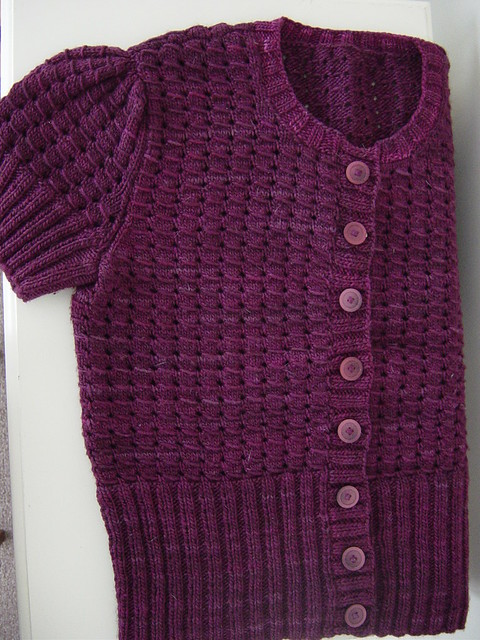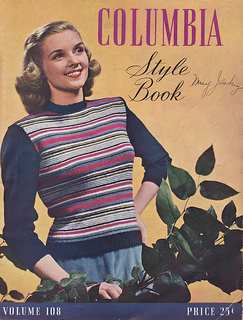The octopus (or ott-pus, as he says) was great fun. My sister-in-law discovered Joan Rowe's Omniscient Octopus pattern, which is an impressive feat of knitterly engineering. It was engaging to knit and full of great true-to-like details, like a siphon and dozens and dozens of suckers. I used a self-striping sock yarn and enjoyed the overall variegated effect from leg to leg, which are knit separately and fed onto one circular needle, meaning that there is pretty minimal seaming to be done at the end. The head is knit up directly from the top of the legs.
After finishing the ottpus, I knew it was time to get back into my century project, so I started to take a look at my 1950s patterns. This is where my personal collection expands exponentially. I have dozens and dozens of '50s booklets from all sorts of sources: my grandmothers and great aunts, yard sales, antique shops, friends...the works. I knew I would have to narrow down my selection somewhat, so I decided to focus on a sub-collection: my newly-acquired Vogue Knitting mags.
These are wonderful publications, chock full of classic patterns that also easily evoke midcentury fashion trends. The sheath dresses, fitted suits, dressy tops, and travel wear, often photographed on location in fabulous places around the world, are all so sleek and elegant.
I paged through my mini-collection a couple of times, finding myself drawn to the dress patterns over and over. I worked up my personal knitting courage and decided to commit to a dress for my 1950s project. After all, I had learned that Consuelo, the woman to whom these books originally belonged was a fearless knitter and had herself knit dresses along with dozens of sweaters for friends and family members. Here she is below, looking so cool as she works on a circular needle all the while keeping a foot on the tiller of her sailboat. The best of multi-tasking! Thanks to Consuelo's daughter Robyn for sharing this fabulous photo with me.
With that, it was decided. A knit dress was in my future. After selecting one with a long full skirt and a wide-necked short sleeve top, I took a look at the instructions, realizing rapidly that the size 1 needles and hundreds of beads required were a bit beyond my desires for this next project (it wasn't obvious in the pattern photo, but the top was both cabled and beaded). So...perhaps that particular dress was not the one in my future.
I eventually settled on a slightly less-involved pattern, with a trimmer skirt and simpler stitch pattern. It's the one on the left in the two-page spread above: a knee-length black dress with an overall lace pattern. I'll be using size 4 needles and two strands held together of a wool/rayon crepe yarn, which I believe is quite similar to the original yarn specified in the pattern. My swatch is a dense springy mesh, to which the lace pattern brings great texture and the fiber blend lends good structure. I hope it will work up into a comfortable, fun garment. Stay tuned. My 1950s dress is underway.







































